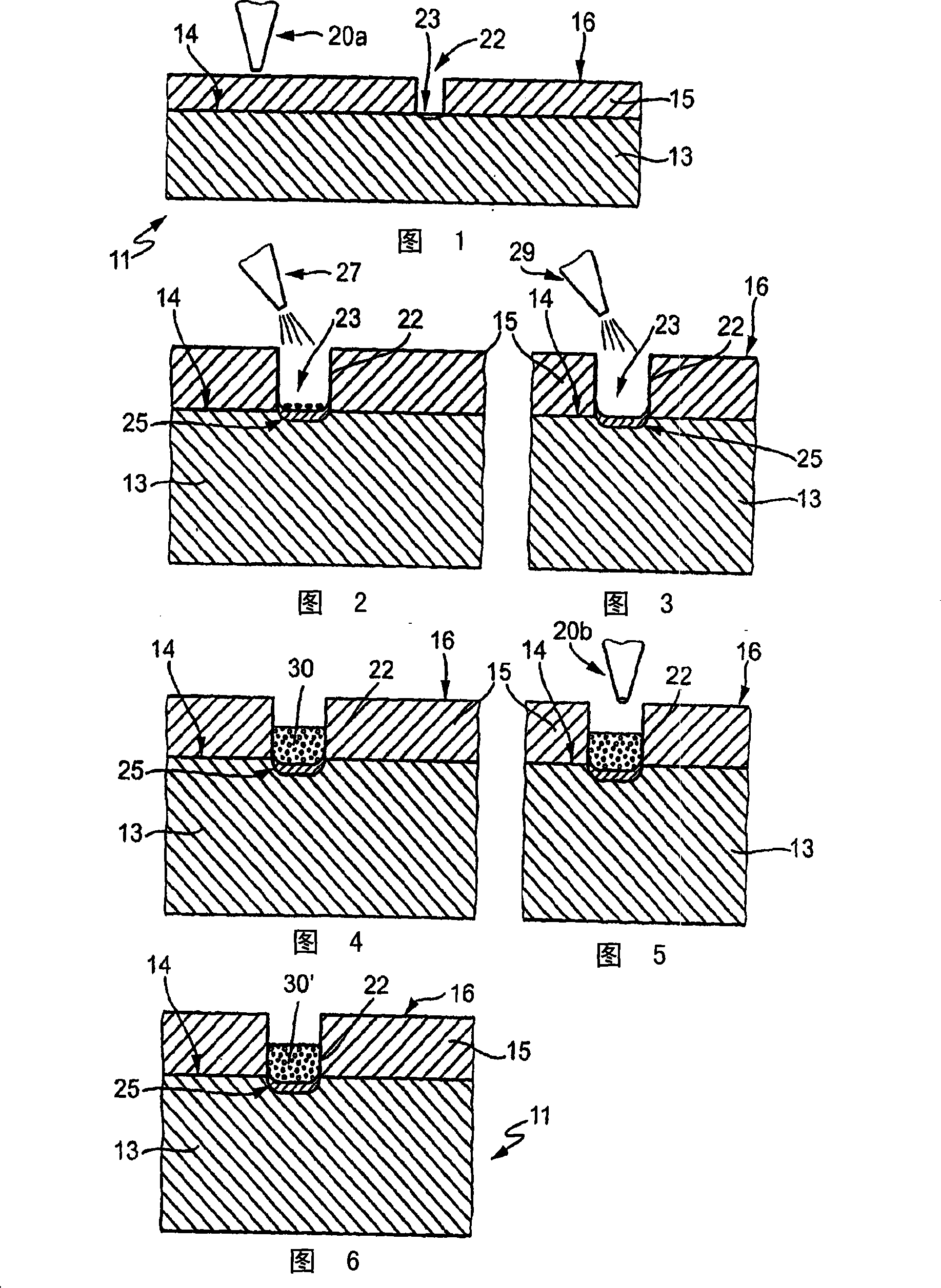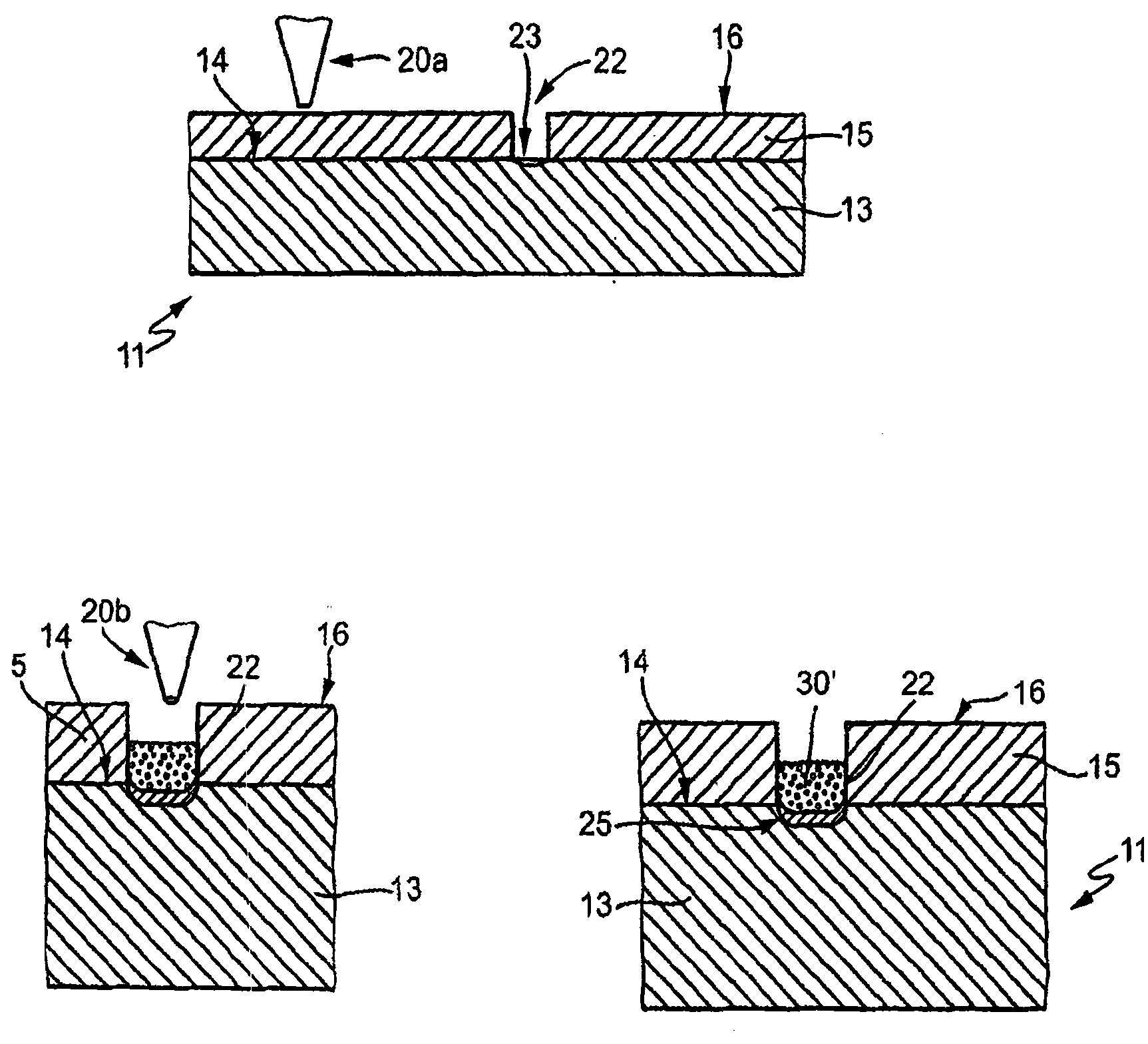Method and apparatus for processing of substrates having laser-written trench contacts, in particular solar cells
A technology of solar cells and grooves, applied in the field of processing base parts, can solve the problems of high process cost and damage
- Summary
- Abstract
- Description
- Claims
- Application Information
AI Technical Summary
Problems solved by technology
Method used
Image
Examples
Embodiment Construction
[0023] figure 1 Shown is a solar cell 11 with a silicon active layer 13 . The top surface 14 of the active layer 13 is coated with an anti-reflection layer 15 which may consist, for example, of SiNx. This structure has long been known to professionals.
[0024] Such as figure 1 As shown, the top surface 16 of the anti-reflection layer 15 is irradiated with a laser 20a, and a groove 22 is processed therein. A plurality of mutually parallel grooves 22 are processed at a certain distance, just like the contacts already existing on the solar cell 11 . from figure 1 It can be seen from the figure that the trench bottom 23 is roughly located in the area where the top surface 14 of the active layer 13 is located. This means that the entire anti-reflection layer material will be removed in the trench 22 by the width of the trench.
[0025] The laser can be set as follows:
[0026] The pulse energy is 25-80μJ / per pulse, the focal spot diameter is about 22μm, and the power per...
PUM
 Login to View More
Login to View More Abstract
Description
Claims
Application Information
 Login to View More
Login to View More - R&D
- Intellectual Property
- Life Sciences
- Materials
- Tech Scout
- Unparalleled Data Quality
- Higher Quality Content
- 60% Fewer Hallucinations
Browse by: Latest US Patents, China's latest patents, Technical Efficacy Thesaurus, Application Domain, Technology Topic, Popular Technical Reports.
© 2025 PatSnap. All rights reserved.Legal|Privacy policy|Modern Slavery Act Transparency Statement|Sitemap|About US| Contact US: help@patsnap.com


